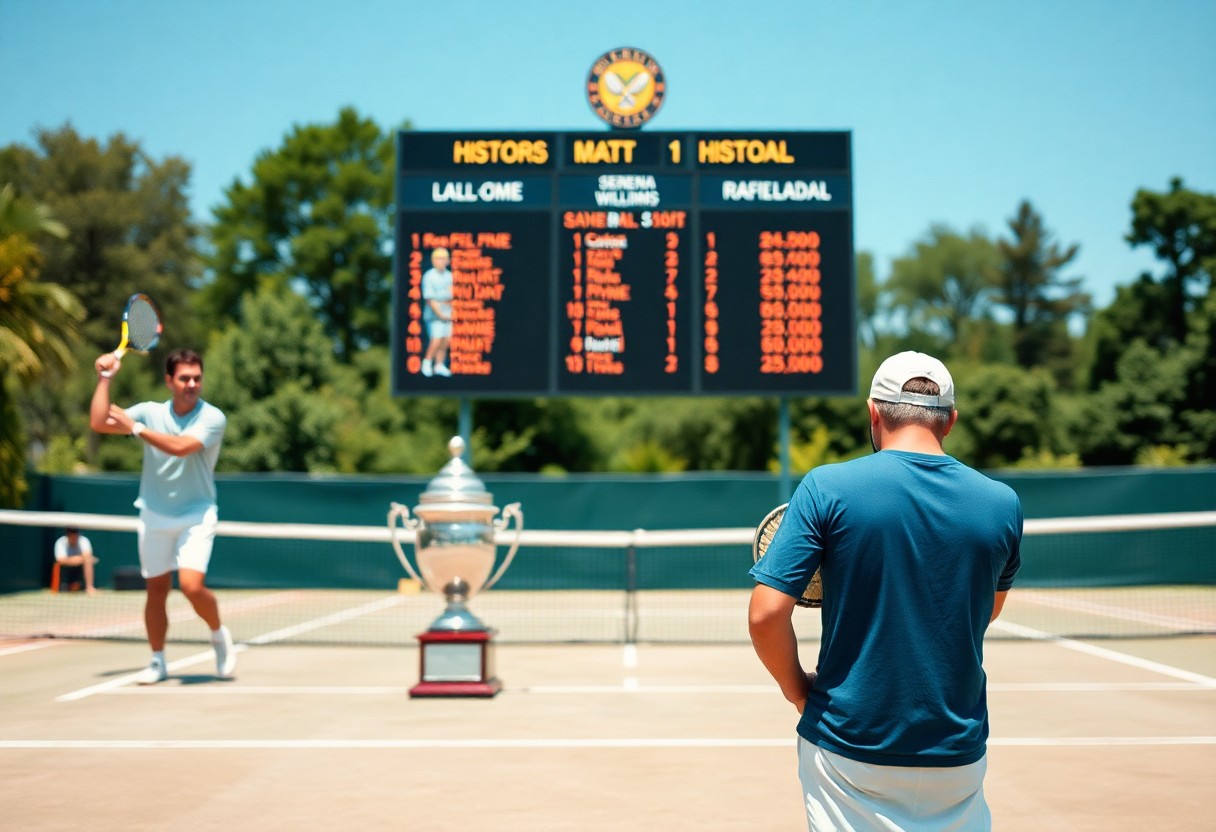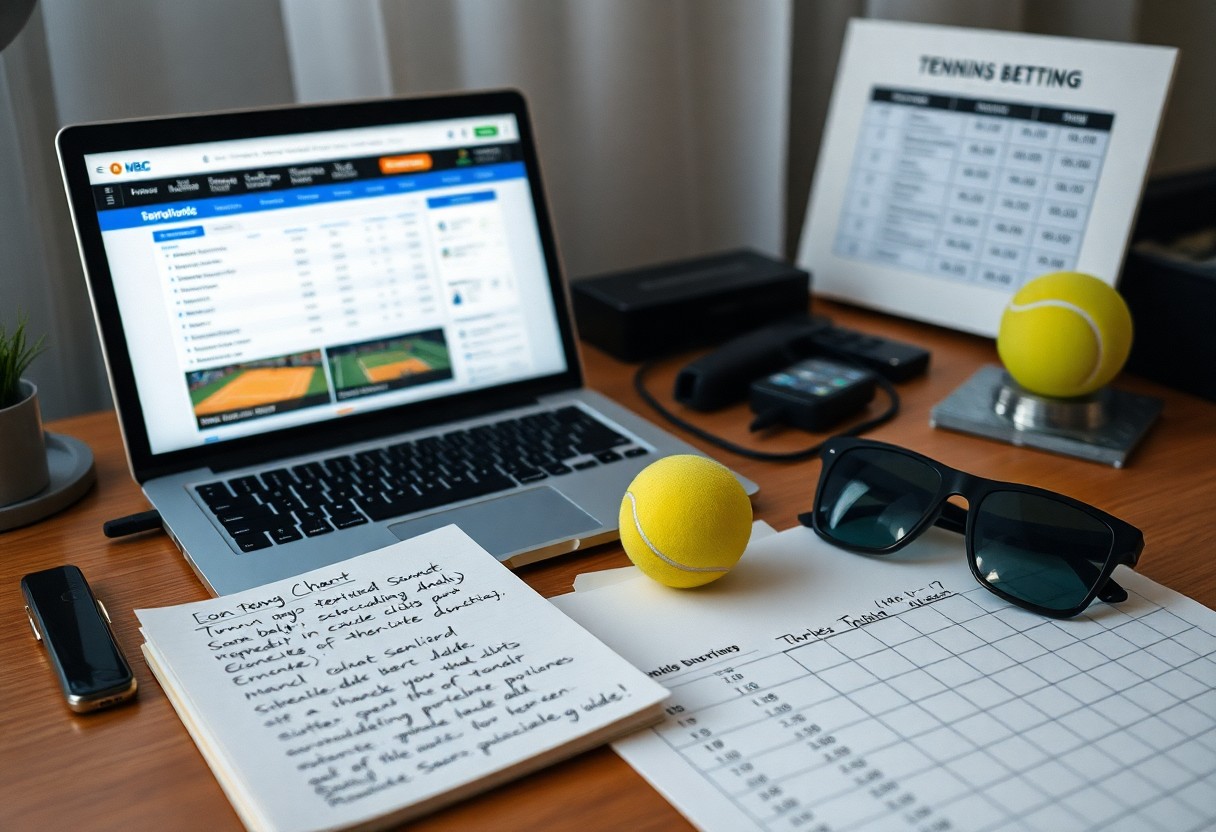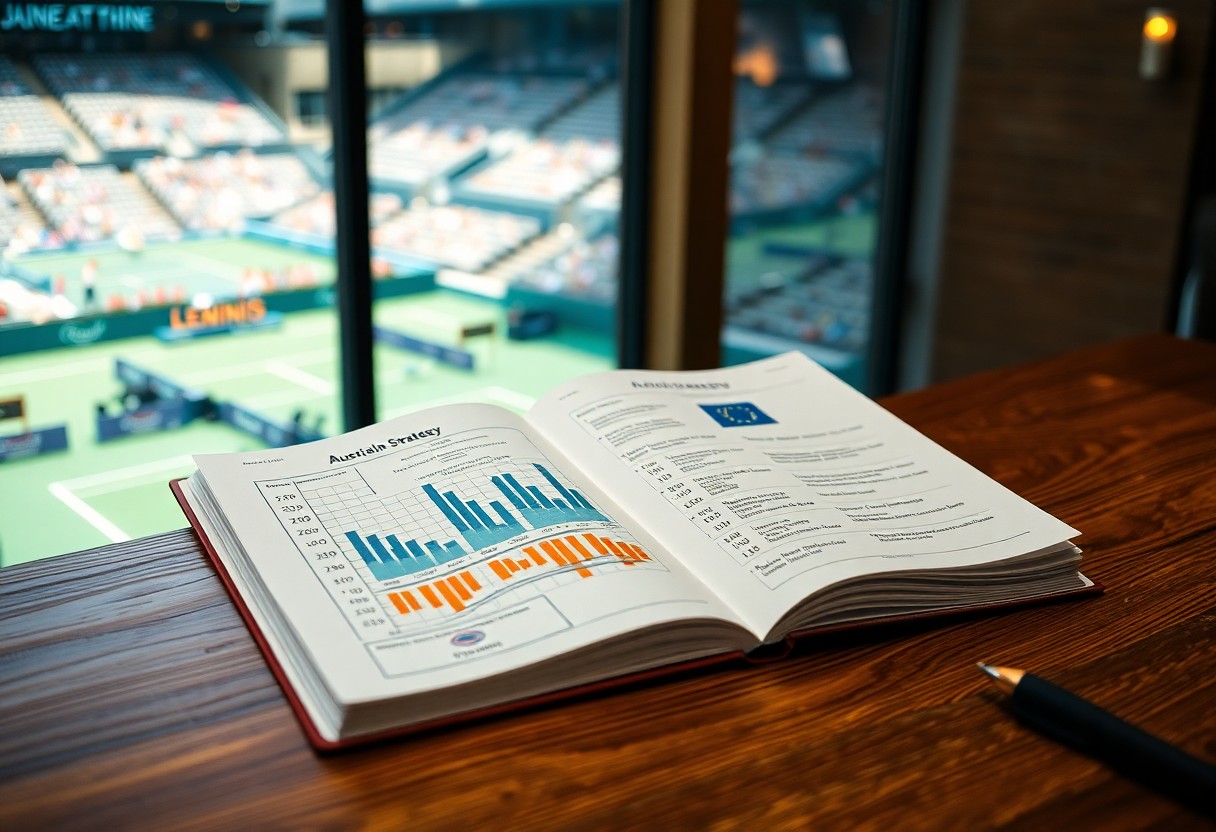It’s necessary to examine the training habits of the world’s best tennis players to understand what drives their success. These elite athletes dedicate themselves to a regime that combines consistent practice, mental resilience, and strategic conditioning. By integrating techniques such as deliberate practice and recovery protocols, they maintain peak performance while minimizing the risk of injury. Studying these methods offers valuable insights for aspiring players and enthusiasts alike, highlighting the importance of discipline and dedication in the pursuit of excellence.
The Importance of Consistency in Training
Consistency in training shapes the foundation of success for elite tennis players. Regular practice sessions, supplemented by a structured routine, help to develop muscle memory and refine skills necessary for high-pressure matches. The world’s best players dedicate themselves to maintaining a disciplined schedule, often training six days a week, which ensures their technique and conditioning remain sharp, allowing them to perform at peak levels during competition.
Daily Routines of Elite Players
Elite players often start their days early, engaging in physical conditioning before transitioning to on-court practice. A balanced routine typically includes time for strength training, mobility exercises, and match simulations. For instance, Novak Djokovic incorporates yoga and meditation into his daily regimen, promoting both mental clarity and physical wellness, illustrating the holistic approach many top athletes adopt.
Long-term Commitment to Improvement
The journey of improvement is a lifelong commitment for top tennis players. They consistently seek feedback, be it through video analysis or coaching advice, to refine their game. This dedication is evidenced by Roger Federer, who has continually evolved his playing style, embracing new techniques even after decades on the tour.
Long-term commitment involves setting specific, measurable goals and working tirelessly towards them. For example, players like Serena Williams focus not only on winning matches but also on adding new skills to their repertoire, such as enhancing their serve or improving their footwork. This evolution doesn’t come overnight; it requires patience, resilience, and an unwavering belief in the process of development. They invest in off-season training and seek innovative workshops to enhance their competencies, understanding that every small improvement contributes to their overall performance in the sport.
Physical Conditioning and Fitness
Physical conditioning and fitness are crucial for elite tennis performance, as they enhance players’ ability to endure long matches and execute high-level shots. Top athletes incorporate a variety of training methodologies to develop strength, speed, and overall athleticism, focusing on tailored plans that align with their specific needs.
Strength Training Regimens
Strength training is a vital aspect of tennis preparation, where players engage in targeted weightlifting sessions to boost their power and explosiveness. Exercises like squats, deadlifts, and lunges build the lower body strength necessary for quick starts and powerful serves. Structure and progression in these regimens help athletes maximize their potential while minimizing injury risks.
Endurance and Agility Drills
Endurance and agility drills are integral to maintaining peak performance throughout matches. Players often incorporate high-intensity interval training (HIIT) and agility ladder exercises to enhance their speed on the court while building stamina. By developing these skills, athletes ensure they can respond swiftly to opponents’ shots during grueling match situations.
Endurance and agility drills typically involve exercises such as shuttle runs, sprints, and lateral movements, which mimic the demands of a match. For instance, a study showed that professional players might run up to *three miles per match*, necessitating a high level of cardiovascular fitness. Incorporating *plyometric exercises* can improve reactive speed, while *circuit training* focusing on short, intense bursts enhances overall agility. This combination effectively prepares players for the unpredictable nature of competitive matches, allowing them to execute strategies while conserving energy for critical moments.
Mental Training Techniques
Mental training techniques play a vital role in shaping the psychological resilience of top tennis players. By focusing on mental strategies, players enhance their competitive edge, enabling them to perform under pressure and maintain peak performance during high-stakes matches.
Visualization and Focus
Visualization techniques allow players to mentally rehearse matches and key plays, creating a strong mental blueprint of success. By vividly imagining successful shots and scenarios, athletes like Novak Djokovic and Serena Williams improve their focus, enabling them to execute their strategies more effectively during real matches.
Mindfulness and Stress Management
Mindfulness practices help athletes cultivate awareness and stay grounded during matches. Techniques such as meditation and breathing exercises assist players in managing stress levels, allowing them to maintain focus and composure regardless of the score. Incorporating these practices into daily routines enhances psychological well-being.
Mindfulness and stress management techniques are increasingly embraced by elite players. Studies show that athletes who engage in mindfulness training report lower levels of anxiety and improved emotional regulation, which directly correlates with on-court performance. Rafael Nadal utilizes breathing techniques between points to maintain calmness, while other players incorporate structured mindfulness sessions into their training schedules. By nurturing a present-focused mindset, players find strength and clarity, ultimately enhancing their ability to perform consistently under pressure.
Adaptability in Training Approaches
Adaptability in training approaches is vital for the world’s best tennis players, allowing them to maximize their performance on the court. Top athletes constantly modify their routines based on factors like opponent styles, weather conditions, and evolving physical capabilities. For instance, Rafael Nadal is known for adjusting his training intensity based on upcoming tournaments, ensuring he peaks at the right moments. This dynamic approach guarantees that players remain competitive and resilient against various challenges they face throughout their careers.
Learning from Losses
Learning from losses is a hallmark of the greatest tennis champions. Each defeat is analyzed meticulously, as athletes reflect on their performance to identify weaknesses and areas for improvement. Novak Djokovic, for example, studies match footage to pinpoint tactical errors, transforming setbacks into learning experiences. This process not only enhances their skills but also strengthens their mental fortitude.
Tailoring Training to Personal Strengths
Tailoring training to personal strengths enables players to refine their unique style and capitalize on their inherent abilities. Stars like Serena Williams focus on enhancing their powerful service game, incorporating specific drills that amplify their effectiveness on the court. Crafting individualized training plans fosters not just skill development but also reinforces players’ confidence in their strengths.
This tailored approach involves a deep understanding of each player’s strengths, weaknesses, and playing style. For instance, players may analyze their match statistics to determine which strokes yield the highest success rates and then dedicate training time to perfect these areas. Customized training programs are often informed by professional coaching staff who collaborate closely with the player, ensuring that practice aligns with both short-term goals and long-term career aspirations. This level of personalization allows athletes to differentiate themselves in a competitive landscape.
Nutrition and Recovery Practices
Nutrition and recovery practices are integral to sustaining peak performance levels in tennis. Players prioritize tailored diets that not only fuel training sessions but also enhance recovery. For top athletes, understanding the right balance of macronutrients and hydration is imperative to maintain stamina and power throughout grueling matches.
Diet of Top Tennis Athletes
The diet of elite tennis players is meticulously crafted, focusing on whole foods rich in carbohydrates, protein, and healthy fats. Foods like quinoa, lean meats, and ample vegetables provide the necessary energy and nutrients to optimize performance. Athletes like Novak Djokovic emphasize gluten-free diets rich in fruits and nuts, while Venus Williams has adopted a vegan approach, showcasing the diversity in diet plans among the top professionals.
Importance of Rest and Recovery
Rest and recovery are vital for preventing injuries and enhancing performance in tennis. Top players utilize various recovery techniques, including sleep optimization, active recovery days, and advanced therapies like cryotherapy, which reduce muscle inflammation and speed up recovery times.
Moreover, adequate rest periods allow muscles to repair and rebuild after intense training or competition. Studies have shown that elite athletes can benefit from up to 10 hours of sleep per night, significantly impacting their reaction times and decision-making skills on court. By combining strategic rest with routine recovery practices, players can maintain endurance and overall physical integrity, ultimately prolonging their careers and enhancing their competitive edge.
Utilizing Technology and Analytics
World-class tennis players are increasingly leveraging technology and analytics to enhance their training efficiency and overall performance. By integrating tools such as biomechanics, video analysis, and match simulations into their practice routines, these athletes can uncover specific areas of improvement, optimize techniques, and better anticipate opponents’ strategies. The data-driven approach allows for a more personalized training regimen, ultimately leading to significant gains on the court.
Data-Driven Training Programs
Data-driven training programs focus on metrics that assess players’ physical performance, stroke efficacy, and court coverage. These tailored programs utilize information collected from various sources, including wearable devices and video analysis, to pinpoint weaknesses and enhance strengths. For instance, Novak Djokovic employs sophisticated analytics to refine his serve and return game, allowing him to adapt his strategies in real-time based on competitor performance.
Performance Tracking Tools
Performance tracking tools play an crucial role in monitoring players’ progress and physical exertion levels during training. Devices such as GPS trackers and heart rate monitors provide invaluable insights into player movement and stamina, helping coaches to adjust practice intensity accordingly. Consequently, leading athletes can maintain optimal conditioning while minimizing the risk of injury.
Performance tracking tools have transformed how players evaluate their physical state and effectiveness on the court. For example, using Hawk-Eye Technology, players and coaches can analyze shot placement and court coverage with precision, highlighting patterns that might otherwise go unnoticed. This data enables players to make informed decisions about shot selection and positioning during matches. Additionally, wearables allow for continuous monitoring of physiological metrics, enabling a focus on recovery and workload management that is tailored to individual needs.
To wrap up
Considering all points, the training habits of the world’s best tennis players emphasize a blend of physical conditioning, mental fortitude, and strategic preparation. Their disciplined routines highlight the importance of consistency, adaptability, and focused practice. By adopting similar approaches to training, including a commitment to fitness, mental resilience, and tailored strategies, aspiring players can develop skills that set them on a path to success in the sport. Learning from these elite athletes provides valuable insights into cultivating a high-performance mindset and a strong work ethic necessary for excellence in tennis.
FAQ
Q: What specific training routines do top tennis players follow?
A: Top tennis players typically incorporate a mix of physical conditioning, technical drills, and match simulation in their training routines. This includes strength training, agility exercises, endurance workouts, and hours of hitting to refine their strokes. They also focus on mental training, including visualization techniques and on-court strategy sessions.
Q: How do elite players manage their recovery between training sessions?
A: Elite players prioritize recovery through various methods such as adequate sleep, nutrition, hydration, and physical therapy. Many utilize methods like ice baths, massages, and stretching routines to reduce muscle soreness and enhance performance. Incorporating rest days is also important for preventing injuries and maintaining peak physical condition.
Q: What mental aspects of training do the best players emphasize?
A: The best players emphasize mental resilience, focus, and adaptability. They engage in mindfulness practices and play mental games to improve concentration during matches. Developing a strong competitive mindset and the ability to cope with pressure are integral components of their training regimen, often involving sports psychologists to enhance mental performance.




